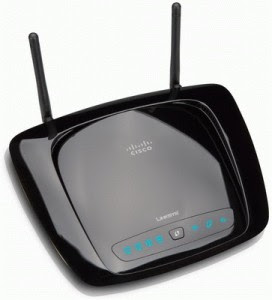
A modern wireless router specifications for present is 802.11n, 4 Ethernet ports, Hi-speed Boardband WAN port. It cost around 50$. Even low cost router supports 802.11n, although they don't have as many features and doesn't have a built-in modem, so you'll have to use it with a modem that has an Ethernet port. Also available at this price are 150 Mb per sec routers. These have fewer antennas, but are often as fast as 802.11n devices. You can expect a transfer speed of around 30 Mb per sec at 10m from any modern 802.11n router.
If you have ADSL, you should get a wireless router with a built in modem. It will cost more than the equivalent cable router, but it lets you connect your router directly to your broadband connection without a separate modem. ADSL 2 plus modems support broadband connections up to 24 Mb per sec with an ISP.
Many routers have built in USB ports that allow you to connect a USB drive and use the router as a basic network storage device. If you want to share a USB printer on your network, look for a wireless router with a built in print server. Alternatively, you can add a dedicated wireless print server later. Finally, if you're interested in making voice calls over the internet, look for a router with built in Voice Over IP support as this can save you money.
Most 802.11n wireless routers use the 2.4GHz frequency. This has good range but can be prone to interference if it's near a lot of other 2.4GHz devices, such as other routers and baby monitors. If you have trouble getting a consistent wireless signal or you want faster transfer speeds for wireless video streaming, it's worth buying a dual-band router, which can use both the 2.4GHz and 5GHz bands. Alternatively, a hi-gain antenna can boost signals and improve ranges and throughputs to the whole house. You can also add a hi-gain antenna to a PC's network adaptor. If wired network speeds are a priority, look for a router with Gigabit Ethernet.



